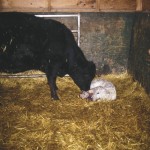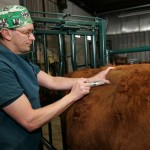
Putting thought into changing vaccine lines
Animal Health: With a bit of planning, it is possible to switch from one manufacturer to another

Drought brings its own package of health risks for livestock
Pests, toxic plants and disease can all thrive under dry conditions

Dealing with downer cattle, not simple or easy
Animal Health: There are many reasons a seemingly healthy cow can go down, and quite often no easy procedure to get her back up

Measuring a bull’s scrotal circumference
Pay attention to minimum measurements for different breeds, but bigger isn’t always better

Refresher on pulling a calf
Even if you have easy calvers, it's a skill worth perfecting

Tips for a healthy calf crop
On-farm biosecurity to reduce disease risk just makes good business sense

Treatment options for handling retained placentas
Animal Health: A common indicator of placenta retention is a decrease in milk production for calves

Snow can be an excellent water source for cattle
Eating snow is a learned behaviour which may take a few days for livestock to adjust

Animal Health: Important tips for selecting the right antibiotic


